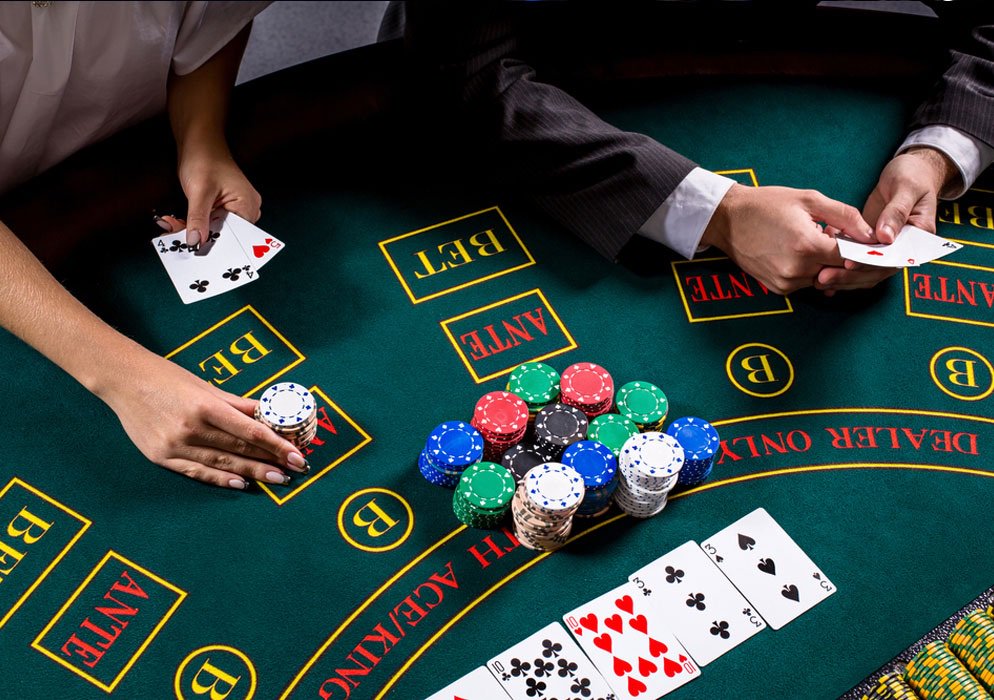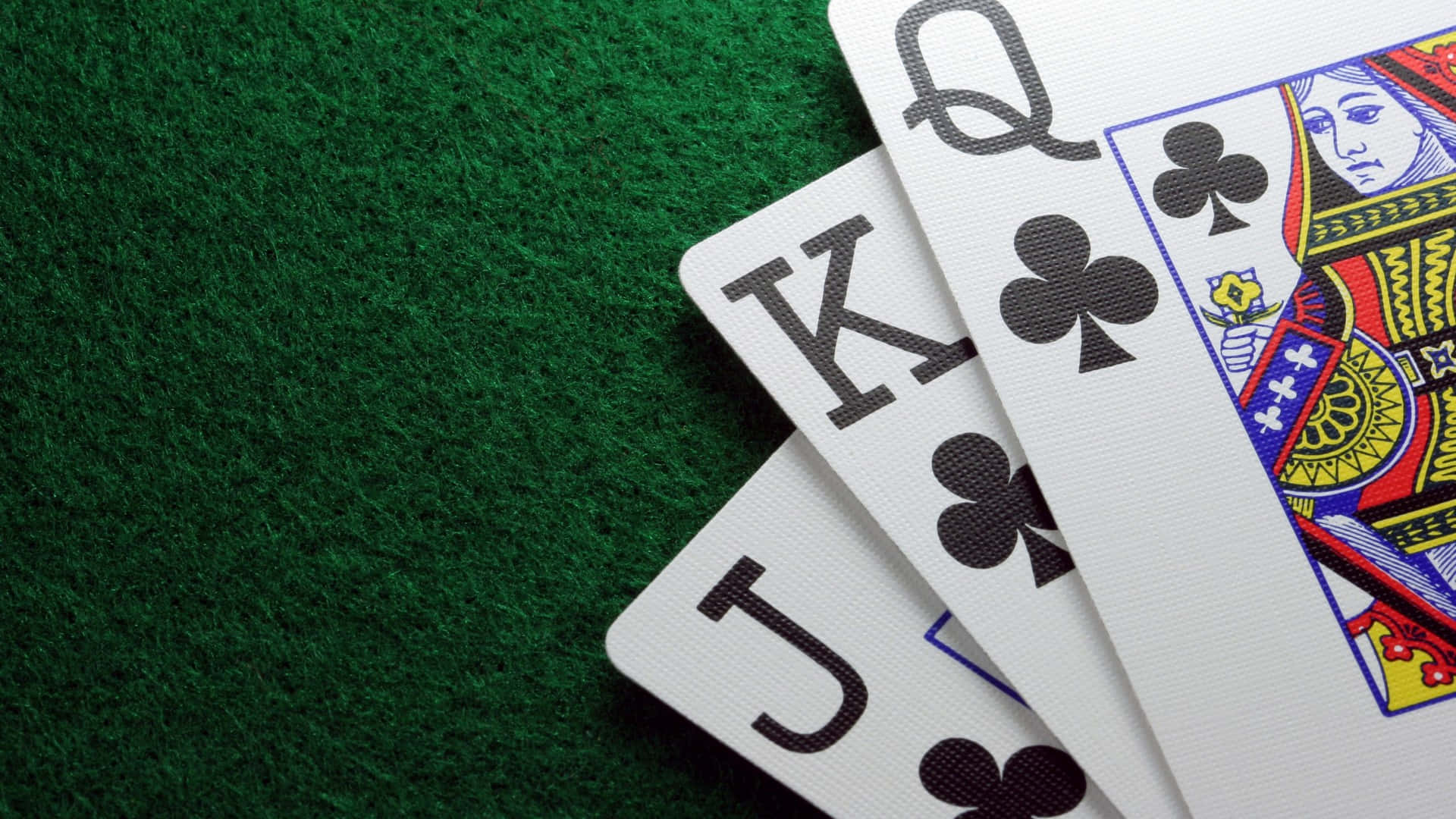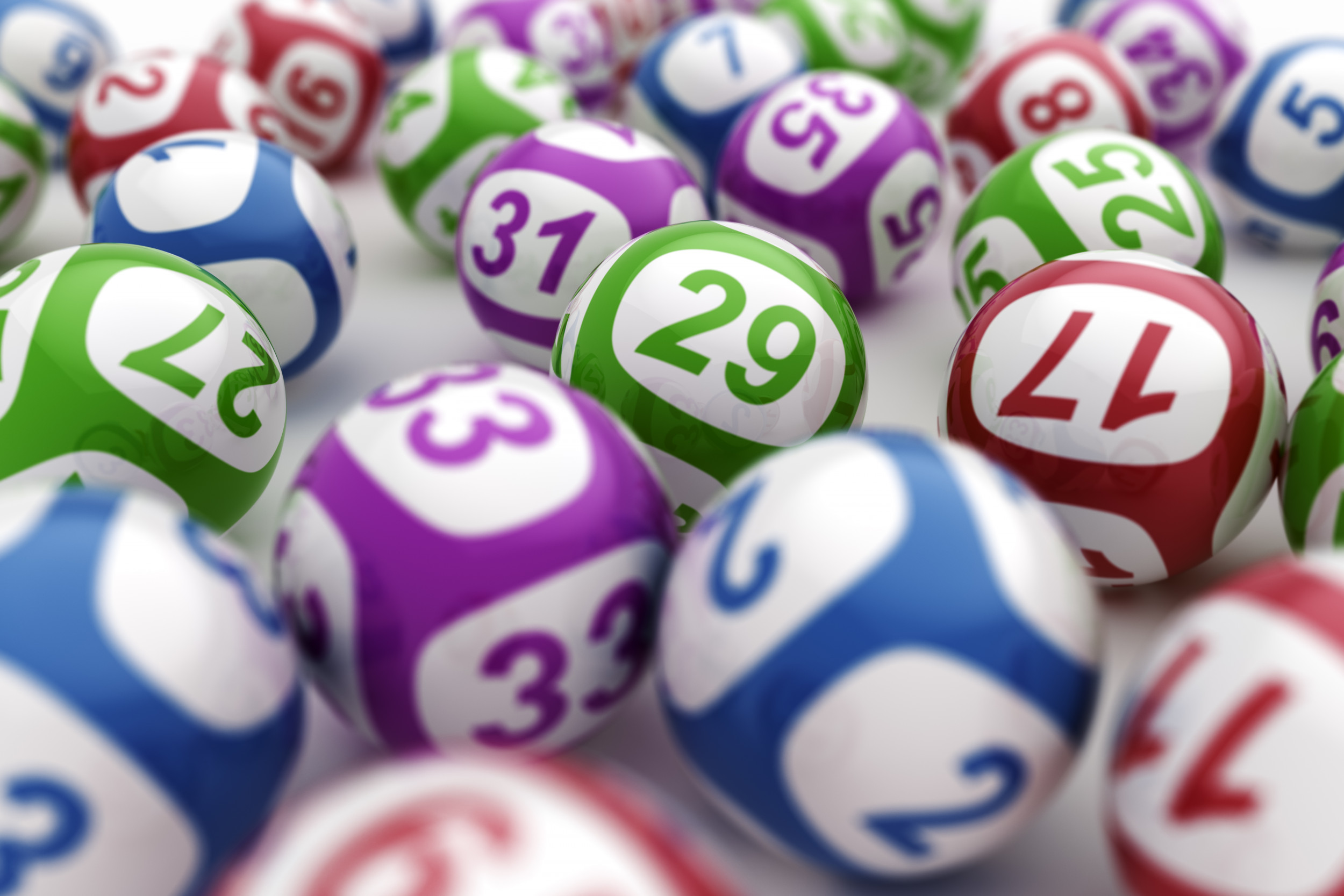Introduction
What Is Heads Up Poker: Heads-up poker is an exciting and intense variant of the classic game, known for its one-on-one dynamic. In this format, only two players face off against each other, creating a highly personal and competitive showdown. Whether played in live casinos, online poker rooms, or home games,heads-up poker offers a unique and fast-paced experience that tests players’ skills, adaptability, and psychological acuity.
In heads-up poker, players engage in a mano-a-mano battle, where each decision and move have a direct impact on the outcome of the game. The reduced number of players at the table results in a more dynamic and fluid gameplay, with action unfolding rapidly from one hand to the next.
The format of heads-up poker can occur in various settings, including cash games, tournaments, and sit and go events. At the final table of poker tournaments, heads-up play determines the ultimate winner, adding even more tension and excitement to the game.
To heads-up poker, we will explore the unique aspects and challenges of this format. From understanding its rules and strategies to appreciating the psychological aspect of one-on-one battles, we will delve into the intricacies that make heads-up poker a favorite among skilled players seeking intense competition and an opportunity to showcase their expertise in a thrilling poker showdown. So, let’s shuffle the virtual deck and prepare for an exhilarating journey into the captivating realm of heads-up poker!

What does heads up mean in poker?
Heads-up poker refers to any form of the game in which the hand is played out between just two players. Head-to-head poker in other words. Virtually any type of poker can be played heads-up.
In poker, “heads up” refers to a specific playing situation where only two players are involved in a hand or a game. This term is commonly used in poker tournaments and cash games when there are only two remaining players at the table.
During heads-up play, the dynamics and strategies significantly differ from regular full-table play. With only two players, the hand ranges and hand strengths change, and the betting patterns become more intense and personal.
Heads-up play can occur in various contexts:
1. Final Table: In a poker tournament, heads-up play occurs when only two players remain at the final table, competing for the title and top prize.
2. Cash Game: In a cash game, two players might choose to play heads-up against each other, either at a dedicated heads-up table or after other players have left the table.
3. Sit and Go: Heads-up sit and go tournaments are small poker competitions where only two players face off, and the winner takes all.
4. Online Poker: Online poker platforms often offer heads-up tables, allowing players to engage in one-on-one matches against each other.
During heads-up play, players need to adjust their strategies to become more aggressive and observant of their opponent’s tendencies. Position and table dynamics become critical, as players will be in the blinds more often, affecting their betting decisions.
Heads-up play in poker is considered one of the most challenging and skillful aspects of the game, as players must adapt quickly and make informed decisions to outplay their opponent in this mano-a-mano showdown.
How is heads up poker different?
Heads-up poker is a game of poker with only 2 players.
When you go heads-up in flop games, the order of the blinds is switched so the button posts the small blind. This also means that the action goes to the button first pre-flop.
Heads-up poker differs from regular full-table poker in several significant ways:
1. Number of Players: The most apparent difference is the number of players involved in a hand or game. Heads-up poker involves only two players facing off against each other, while regular full-table poker typically has six to nine players.
2. Hand Ranges: With fewer players, hand ranges in heads-up poker expand, meaning a wider range of hands can be playable in various situations. Players need to adjust their starting hand requirements and adapt to their opponent’s playing style.
3. Betting Patterns: In heads-up play, betting becomes more aggressive and frequent. Players are in the blinds more often, leading to more preflop and postflop betting, making bluffing and semibluffing crucial strategies.
4. Psychological Aspect: Heads-up poker introduces a more personal and psychological element to the game. Players must read their opponent’s behavior, adapt to their tactics, and adjust their own strategies accordingly.
5. Positional Importance: Position becomes even more critical in heads-up play, as the dealer position (button) alternates after each hand. Being in position allows players to act last, gaining an advantage in the betting rounds.
What is the difference between heads up poker and Texas Holdem?
Heads Up Hold’em only allows players to raise three times the ante before the flop. This changes some of the preflop strategy from Ultimate Texas Hold’em. For example, a queen with an 8 or 9 is only played preflop if it is suited. No worse queen-high hands are played preflop.
Heads-up poker and Texas Hold’em are related but distinct formats of the same poker game. The main difference between the two lies in the number of players involved and the playing dynamics:
1. Number of Players: The most significant distinction is the number of players. Texas Hold’em is a popular variant played with multiple players, usually six to nine at a full table, while heads-up poker involves only two players facing off against each other.
2. Betting Rounds: In both heads-up poker and Texas Hold’em, there are four betting rounds: preflop, flop, turn, and river. However, in heads-up play, the dynamics of betting change significantly due to the limited number of players involved.
3. Hand Ranges: With fewer players in heads-up poker, the hand ranges are wider, meaning a wider range of starting hands can be played in various situations compared to full-table Texas Hold’em, where players typically play tighter ranges.
4. Positional Importance: Position is crucial in both formats, but it becomes even more critical in heads-up poker. In Texas Hold’em, there are multiple players at the table, and position rotates clockwise. In heads-up, the dealer position (button) alternates after each hand, making position play a central aspect.
5. Psychological Aspect: Heads-up poker introduces a more personal and psychological element, as players face off against a single opponent. Players must read their opponent’s behavior and adapt their strategies accordingly.
How hard is heads up poker?
Heads up poker has the deepest strategy in my opinion. A profitable strategy in many 6max and full-ring games can literally just consist of folding preflop and putting money in with the best hand. You can’t “nut-peddle” like that in heads up. The wide ranges force you to get creative.
Heads-up poker is widely regarded as one of the most challenging and skill-intensive formats of the game. Several factors contribute to its difficulty:
1. One-on-One Dynamic: Heads-up poker involves only two players facing off against each other. This creates a more personal and psychological element, as players must adapt their strategies to their specific opponent’s playing style, tendencies, and behavior.
2. Constant Adjustments: In heads-up play, the game evolves rapidly with every hand, requiring players to make quick and accurate adjustments. Players need to constantly reassess their opponent’s tendencies and adapt their own strategies accordingly.
3. Wider Hand Ranges: With only two players, the range of playable starting hands expands. Players must understand the implications of wider hand ranges and be skilled at playing various hands in different situations.
4. Positional Importance: Position becomes even more critical in heads-up poker, as being in position provides a significant advantage. Players need to master position play and capitalize on the opportunities it presents.
5. Psychological Pressure: The personal nature of heads-up play introduces additional psychological pressure. Maintaining focus, composure, and managing emotions are crucial to success.
How many hands per hour heads up poker?
A typical live poker game will deal 25-30 per hour.
This number will go up when a table is short handed for any length of time.
The number of hands per hour in heads-up poker can vary significantly based on various factors, including the playing style of the players, the speed of the dealer or electronic software, and the complexity of the game. Generally, heads-up poker is known for its fast-paced nature, and more hands can be played compared to full-table games.
In live poker games, where a human dealer handles the cards and chips, the number of hands per hour in heads-up play can range from 50 to 100 hands. The pace is typically faster than in full-table games, as there are only two players involved, and the dealer can quickly move from one hand to the next.
In electronic heads-up poker games, such as those found in online poker rooms or electronic gaming machines, the number of hands per hour can be even higher. Online poker platforms often have features that allow players to play multiple tables simultaneously, further increasing the number of hands they can play in an hour.
It is essential to note that the speed of the game can also be influenced by the players’ decision-making and betting speed. Some players might take more time to make their moves, which can slow down the game, while others may play more swiftly, leading to a higher number of hands per hour.
Overall, heads-up poker is known for its fast and action-packed gameplay, allowing players to experience more hands and intense strategic battles in a shorter amount of time compared to traditional full-table games.
What is the main difference between heads-up poker and traditional full-table poker?
The main difference between heads-up poker and traditional full-table poker lies in the number of players involved in a hand or game. In heads-up poker, only two players face off against each other, while traditional full-table poker typically involves six to nine players seated at a table.
With fewer players in heads-up poker, the dynamics and strategies significantly change, making it a more intense and personal format. Here are some key distinctions:
1. Hand Ranges: In heads-up poker, hand ranges expand since there are only two players. This means a wider range of starting hands can be playable in various situations. In contrast, in full-table poker, players tend to play tighter hand ranges due to the increased number of opponents.
2. Betting Patterns: With fewer players, heads-up poker involves more aggressive and frequent betting. Players are in the blinds more often, leading to more preflop and postflop betting, and bluffing becomes a crucial strategy.
3. Psychological Aspect: The personal nature of heads-up play introduces a higher level of psychological pressure. Players must adapt their strategies to their specific opponent’s playing style, tendencies, and behavior, making reading opponents essential for success.
4. Positional Importance: Position becomes even more critical in heads-up poker, as the dealer position (button) alternates after each hand. Being in position provides a significant advantage in decision-making, influencing betting and bluffing opportunities.
Overall, heads-up poker offers a faster-paced, strategic, and intensely competitive experience compared to traditional full-table poker. The format demands quick thinking, adaptability, and psychological acuity, making it a favorite among skilled players seeking challenging one-on-one battles on the felt.
How many players are involved in a game of heads-up poker?
In a game of heads-up poker, only two players are involved. As the name suggests, it is a format where two opponents face off against each other in a one-on-one battle. Unlike traditional poker games, which typically involve multiple players seated at a full table, heads-up poker creates a more personal and intense dynamic between the two players.
Heads-up poker can occur in various settings, including cash games, tournaments, and sit and go events. It is commonly played in poker tournaments when there are only two players remaining at the final table, determining the ultimate winner and champion. Additionally, online poker rooms often offer heads-up tables, where players can engage in one-on-one matches against each other.
The format of heads-up poker demands a different set of skills and strategies compared to traditional full-table games. With only two players, hand ranges expand, and positional play becomes even more critical. Players must adapt quickly to their opponent’s playing style and adjust their own strategies accordingly.
Heads-up poker provides a unique and challenging experience, attracting skilled players seeking intense competition and an opportunity to showcase their expertise in a mano-a-mano showdown. The reduced number of players allows for a faster-paced and dynamic gameplay, where every decision and move can have a direct impact on the outcome of the game.
What makes heads-up poker a favorite among skilled players seeking intense competition and skill testing?
Heads-up poker is a favorite among skilled players seeking intense competition and skill testing due to several key factors:
1. Personal Challenge: Heads-up poker presents a one-on-one battle, creating a highly personal and psychological aspect to the game. Skilled players enjoy the challenge of facing off against a single opponent and using their poker expertise to outwit and outplay their rival.
2. Dynamic Gameplay: With only two players involved, heads-up poker offers a faster-paced and more dynamic gameplay compared to traditional full-table games. The action unfolds rapidly from one hand to the next, demanding quick decision-making and adaptability.
3. Expanded Hand Ranges: In heads-up play, hand ranges expand since players face a wider variety of starting hands. Skilled players appreciate the opportunity to explore a broader range of playable hands and use their knowledge to make strategic adjustments accordingly.
4. Positional Importance: Position becomes even more critical in heads-up poker, as players constantly switch between being in and out of position. This positional advantage adds complexity to the game, and skilled players capitalize on it to gain an edge over their opponents.
5. Psychological Battle: The personal nature of heads-up poker introduces an additional psychological element. Skilled players must analyze their opponent’s behavior, tendencies, and tells to make well-informed decisions and exploit weaknesses.

Conclusion
Heads-up poker is a thrilling and challenging variant of the classic game that pits two players against each other in a one-on-one battle of wits and skill. This format offers a unique and intense experience, different from traditional full-table poker, with its fast-paced gameplay and constant strategic adjustments.
The reduced number of players in heads-up poker significantly impacts the dynamics of the game. With wider hand ranges, increased aggression, and a more prominent focus on positional play, players must adapt quickly and make informed decisions to gain an edge over their opponent.
Heads-up poker is a favorite among experienced players looking for a higher level of competition and skill testing. The format demands a deep understanding of the game, solid poker fundamentals, and the ability to read opponents accurately. It also requires mental resilience and the capacity to manage emotions effectively, as the personal nature of the game adds psychological pressure to the mix.
From online poker rooms to live casino tables, heads-up poker offers an exhilarating and dynamic experience that showcases the essence of poker as a game of skill, strategy, and psychological prowess. As players engage in intense mano-a-mano battles, the thrill of heads-up poker exemplifies the allure of the game, attracting players seeking a challenge and a chance to prove their mastery in the ever-changing and exciting world of poker. So, embrace the competition, embrace the challenge, and immerse yourself in the captivating world of heads-up poker!










